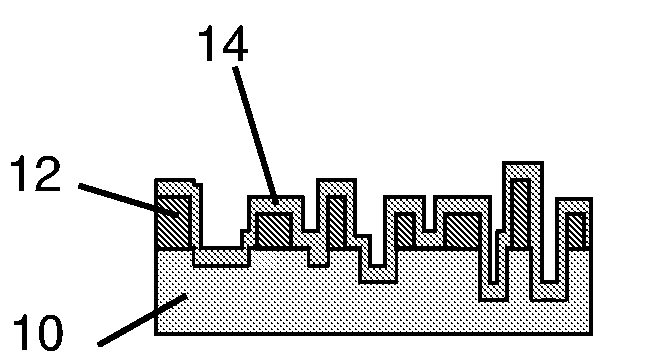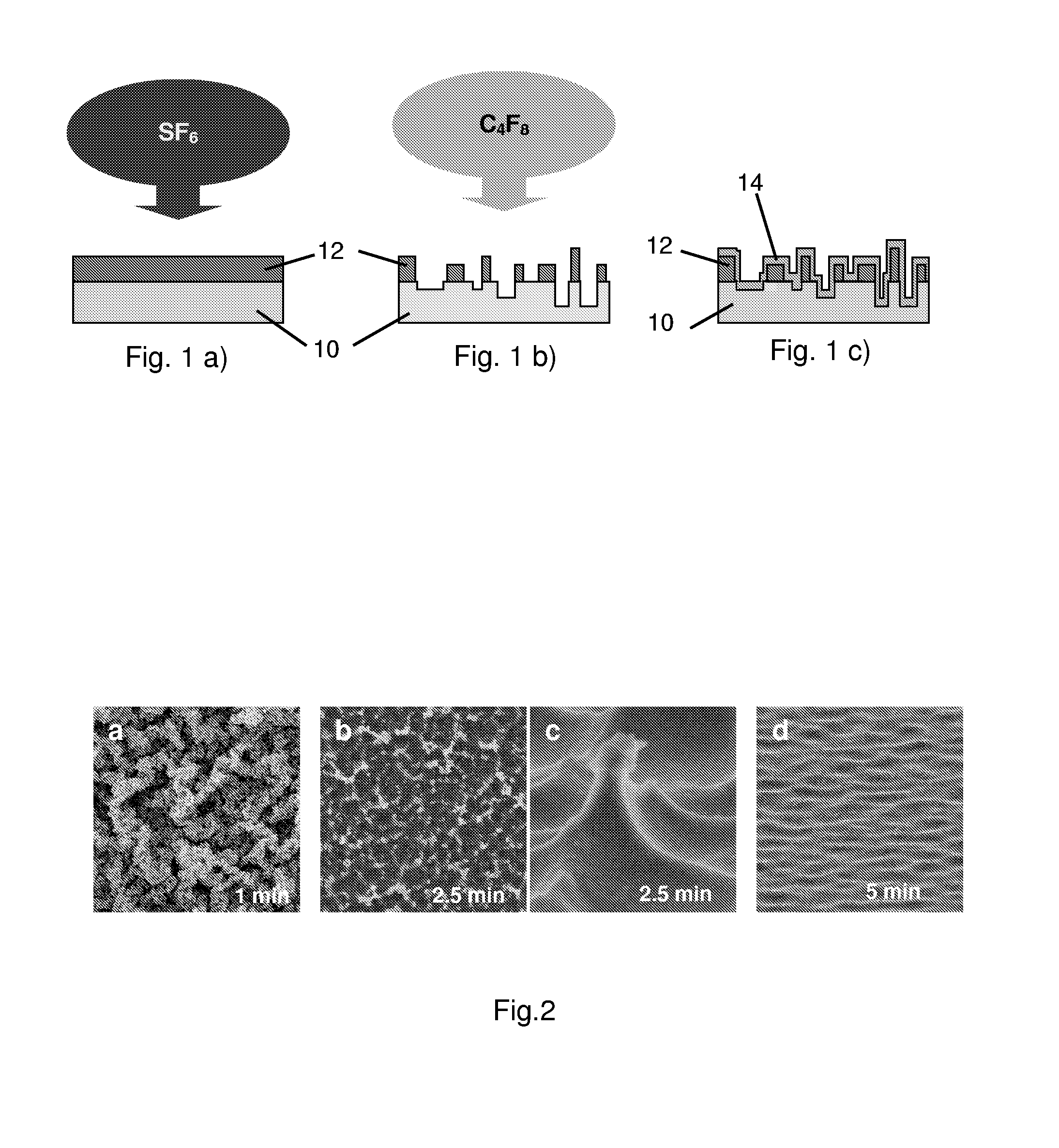Process for controlling surface wettability
a technology of surface wettability and silicon, applied in the direction of decorative surface effects, superimposed coating process, decorative arts, etc., can solve the problems of not being adapted to large-scale production of such silicon devices, complex techniques, and high cost, and achieve the effect of easy application over the substra
- Summary
- Abstract
- Description
- Claims
- Application Information
AI Technical Summary
Benefits of technology
Problems solved by technology
Method used
Image
Examples
example
[0038]In the following example, the preparation of silicon wafers with hydrophilic or hydrophobic surfaces will be described in detail.
[0039]A. Materials and Experimental Procedure
[0040]Silicon wafers (Si (100) diameter 50 mm, resistivity 1-20 Ω·cm, from ITME, Poland) were used as silicon substrate.
[0041]The silicon wafers were cleaned and spincoated at a speed of 2000 RPM with the selected photoresist, namely Microposit® S1813® photoresist (Shipley Company). The thickness of the photoresist coating on the Si wafers was about 2.3 μm.
[0042]In the present example, the photoresist coated wafers were submitted to “uncontrolled” exposition by exposure to natural light for 24 hours. It may however be noted that exposure of the photoresist is not considered as a requirement in the present embodiment, which may be generally the case when photolithography is not involved.
[0043]The previously spincoated wafers were then treated (etched) by means of an inductively coupled plasma discharge. Thi...
PUM
| Property | Measurement | Unit |
|---|---|---|
| Thickness | aaaaa | aaaaa |
| Nanoscale particle size | aaaaa | aaaaa |
| Thickness | aaaaa | aaaaa |
Abstract
Description
Claims
Application Information
 Login to View More
Login to View More - R&D
- Intellectual Property
- Life Sciences
- Materials
- Tech Scout
- Unparalleled Data Quality
- Higher Quality Content
- 60% Fewer Hallucinations
Browse by: Latest US Patents, China's latest patents, Technical Efficacy Thesaurus, Application Domain, Technology Topic, Popular Technical Reports.
© 2025 PatSnap. All rights reserved.Legal|Privacy policy|Modern Slavery Act Transparency Statement|Sitemap|About US| Contact US: help@patsnap.com


